Among the Shadows
How "Army of Shadows" tells the Hidden Story of French freedom fighters.

Originally submitted as an assignment for HIS325 at Lyon College on April 1, 2014. As it was originally in Chicago style, notes will be indicated by a number in brackets, with the associated footnote at the end of the article.
In public school, the extent of learning about World War II revolves around Anne Frank’s struggle with being a Jewish girl in Amsterdam at a time of concentration camps and food rations. The classes never dig much deeper than the Jewish struggle (not to understate it) and for some students, it is not until college that they actually learn how much more there is to the Second World War, like Nazi-occupied France.
France had its own struggles during World War II that high school failed to mention – France was actually occupied by German Nazis. Worse yet, the French were forced to pay for their occupation. Thousands of German soldiers raided their cities, harassed the citizens, destroyed the economy, and the French had to pay them to do so. This entire situation caused resentment from the French people that translated into a few minority groups that would grow to taking drastic opposition against the Germans in isolated, localized resistance movements, which grew together into what is known as the French Resistance.
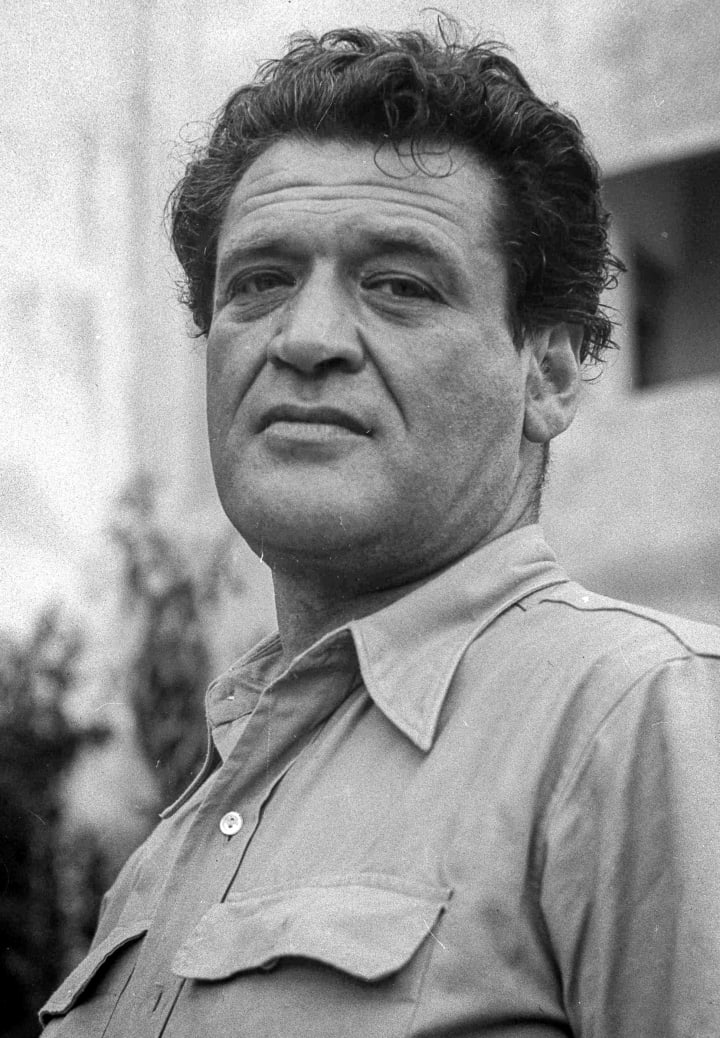
One of these freedom fighters was author Joseph Kessel. Kessel wrote a book, Army of Shadows, in 1943 that was semi-autobiographical in that it was largely about Kessel’s own life, but fictional in that it also blended Kessel’s experience with those of many others, with the primary character being a composite of Kessel and resisters like him.
Jean-Pierre Grumbach, an Alsatian Jew, had his own experience in the Resistance, where he served in the French army and witnessed the Nazi invasion three years after he began his service. He began going by the name “Melville” in Resistance contexts and even after the war had ended, his moniker remained with him throughout his film career[1]. By Melville’s own account, he “discovered Army of Shadows in London in 1943 and have wanted to film it ever since,”[2] a task at which he succeeded in 1969. Melville, like Kessel, had lived the French Resistance and both had participated in the trench-coated, pseudonym-filled world that Melville’s film adaptation of Kessel’s book depicted. Melville’s film details the accounts of several composite characters and their struggles during the Resistance with betrayal, loyalty, collaboration, and resistance, as summed up by the film’s box cover tagline.

Having Melville as a director allowed this film to be both personal and true, echoing the honest tone of Kessel’s book. Despite that, the book and film are different in a way that Melville perfectly summarizes:
The book written by Kessel in the heat of the moment in 1943 is necessarily very different from the film shot cold by me in 1969. There are many things in the book – wonderful things – that are impossible to film now. Out of a sublime documentary about the Resistance, I’ve created a retrospective reverie, a nostalgic pilgrimage back to a time that profoundly marked my generation.[3]
Melville was writing in reflection while Kessel was writing in the moment. Melville looks upon the situation as nostalgic, his reason for the quote at the beginning of the film, of “Unhappy memories! Yet be welcome, for you are my distant youth.” Kessel, on the other hand, likely felt nothing nostalgic about the terrible events in which he was submerged. Despite his romantic feelings for the era, Melville succeeded in refraining from romanticizing the Resistance.
In a particular scene, two men take lunch in a small box inside of a room. The film does not explain this box much, it is simply there, leaving the viewer to question why. In this and many scenes like it, Melville is honest about the situation during the war but does not point at unusual things with a stick, proceeding to poke them to make sure the audience notices. They are simply there as extra touches, flourishes for the camera, to make real the situation without romanticizing it. In Melville’s words, “I didn’t want to make a picturesque film about war.”[4]
Characters in Melville’s film are fully fleshed and are easy to empathize with during their struggles. For instance, in an early scene, Gerbier’s men Felix, Le Bison and Le Masque kill former a former comrade who betrayed Gerbier. The scene is painful, taking place in a dark house near a lively home where children are playing loudly outside. Out of need for quiet, the team decides (after what feels like several stressful minutes of trying to think of a plan) that the deed must be carried out via strangulation – it is the quietest and most efficient way at that point in time, where the men are without a silent weapon. As the strangulation is carried out, the pain in the faces of the three attackers is clear. They were friends with this man, once. But he betrayed them. And now, his punishment was to be death.

This painful killing is echoed much later in the film, when main character and freedom fighter Mathilde, a woman that viewers are well-attached to from early on in the film, is shot by her comrades when Mathilde’s daughter is kidnapped by the enemy and it is feared that Mathilde will talk to save her daughter. The man contemplate how to handle the situation for a while but eventually decide that it is too risky, that Mathilde, as a mother, can be expected to do nothing less than save her child, no matter the cost, and the men that were, and still are, her friends, gun her down in the street. One of the men justified the killing saying that if he were in her place, and the choices were rat on your friends or let your daughter suffer, he would be forced to rat, however, since she was often seen in public by her comrades that knew her situation, he suggested that she might want to die, to be free of the situation. True or otherwise, Mathilde’s expression as her friends drive up in a vehicle while she walks on the sidewalk is of true terror. She is shot and they are pained, but all is done in the name of the resistance.
Just as Mathilde is loved by the audience, so are the men that slay her. Heartstrings are pulled at her death, but no anger is aimed toward her murderous comrades. They allowed Mathilde to die a freedom fighter instead of a traitor and for some filmgoers, that serves as conciliation.
Mathilde, like the other main characters, is a composite of many women fighting in the Resistance, many of them the unsung heroes behind the scenes. Her primary inspiration was Lucie Aubrac, a high school history teacher who participated in escape missions during the Resistance. She and her husband fled when France became unbearable, but many of the involved women stayed on to play their role in the Resistance. Women were not treated the same as men, so women could slip through checkpoints with weapons and radios with the guards being none the wiser. Women were perfect cover operatives and Mathilde is no exception.[5]

Mathilde’s actress, Simone Signoret, revealed in a Criterion Collection interview[6] that she struggled with her role as Mathilde. She often felt guilty about the way she played the part. For instance, every day before filming, Mathilde had to participate in hair and makeup, as all actresses and actors do. This particular day, her makeup artist was applying fake eyelashes to Signoret. The makeup artist was a woman who also fought in the Resistance, “another Lucie Aubrac,” as Signoret referred. Signoret, half-jokingly, half-guiltily asked the woman if she applied fake eyelashes before going out to make a drop. The makeup artist laughed and confessed that there was no time for makeup and fake eyelashes during the war. Signoret’s discomfort stemmed from the fact that the history they were telling was not yet in the past. Lucie Aubracs (the way Signoret refers to the women of the Resistance) were still alive and well, and they would be viewing the film. Her makeup artist was a Lucie Aubrac. Yet, every day, Mathilde’s character was prettified with makeup, fake eyelashes, and clean clothes – amenities not available to the female freedom fighters. Signoret felt guilty depicting the women the way they were not and she felt as if she was imitating them unrealistically, almost belittling their accomplishments by undergoing hair and makeup to depict a character that probably had not even clean clothes to wear. The interview with Signoret is tragic in a way, as the Lucie Aubracs of the world would appreciate her depiction of a woman during the Resistance, but she herself would feel only guilt.
To Melville’s credit, he truly knew how to direct. He framed every scene meticulously, creating millions of stills of painting-esque quality with his carefully guided camerawork. Melville wanted everything perfectly representative of what occurred and what was occurring in his mind regarding the Resistance, so it is no surprise that he was sometimes a pain to work for.[7]
Based on other memoirs and accounts of the French Resistance, Melville did an excellent job capturing it on film. When asked in an interview if “the Resistance people themselves” liked the film, Melville replied:
Yes, I’ve had wonderful letters, and when I arranged a private screening for twenty-two of the great men of the Resistance, I could see how moved they were. They were all Gerbiers, Jardies, Felixes…Henri Frenay told me…“When I came out on the Champs-Elysees I saw the German army filing past in silence, then suddenly the band struck up…and you reconstructed the scene for me in the first shot of your film!”[8]
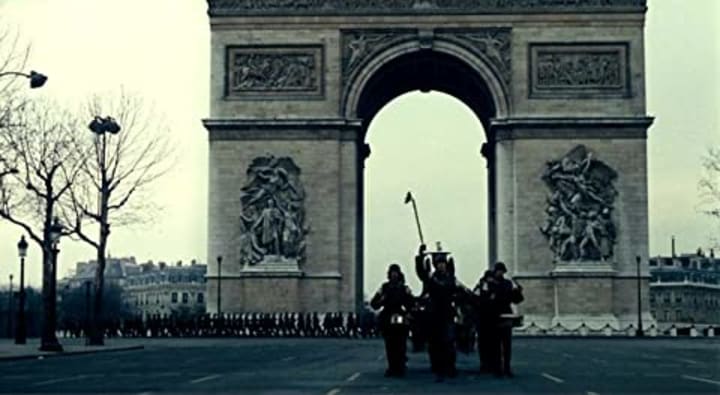
That scene in particular was beloved by many involved in the Resistance and against it – Melville continues with:
For that scene, you know, I used the sound of real Germans marching. It’s inimitable. It was a crazy idea…because actors in German uniform had been banned from the Champs-Elysees since the First World War. One German was anxious to buy the footage for me at any price, because all they have in Germany is a black and white version of the parade.[9]
Melville is so accurate and careful in his depiction that a German man wanted it as a historical reference. The shot is said by Melville to be one of the most expensive in the history of French cinema (at the time of the interview, anyway) and he describes it as one of “only two [shots] I’m really proud of.”[10]
Poor Melville loved his film. He loved the care he put into it and knew what he needed to do to get his personal, indescribable feelings across, but he never saw the reward. The film was released in 1969 France to a poor audience. At the time, emotions were still raw regarding the war and Charles de Gaulle was, by then, considered a betrayer. The film flopped. When Melville died in 1973, he died believing his film had failed. It is tragic that he did not live to see its 2006 theatrical United States release and to receive the raining praises that would follow from critics and viewers alike. Currently, the film receives “nearly universal critical acclaim,” which caused “critics from across the spectrum, who almost never agreed, [to rally] around Melville’s neglected masterpiece.”[11]
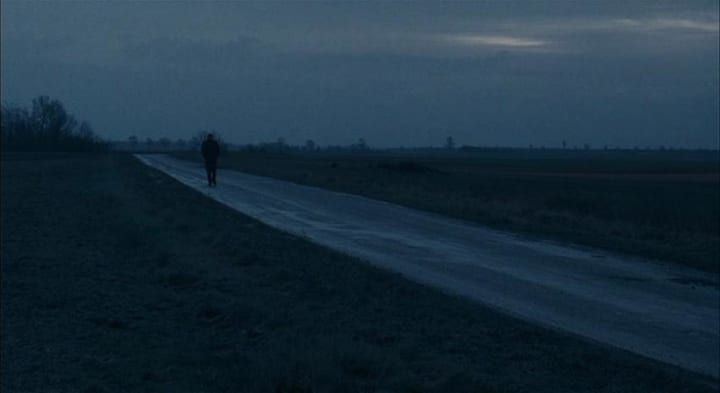
The late film critic Roger Ebert reviewed the film when it released in 2006. He gave it four stars and described it as “not a war film” but instead “about a state of mind.”[12] Ebert also comments on the scene in the movie where the Nazis march their prisoners to a long corridor with machine guns at one end and a wall at the other. The prisoners are told to run, with the first to the wall being spared for now. Gerbier stands still, refusing to run, fighting with himself internally about whether or not he should or even could. Ebert praised the scene as a “moment of excitement” elaborating that it “hinge[d] on decisions, not actions.”[13] It is true; the tension was not built as Gerbier ran down the hall from the machine guns. It was instead built when Gerbier was thinking: do I run or do I not? The anticipation of the decision was what had audiences on the edge of their seat. Ebert also praised Melville for not muddling the movie with romanticism of the era.
Critic Jonathan Rosenbaum says that Melville’s work is full of despair but is also devastating, as opposed to works it is often compared to that lack such emotional depth. The critic typically dislikes Melville, but admired the film’s use of “color…so subdued I almost remember the film in black and white.”[14] The film does indeed have a black-and-white feel. It is as if someone filmed on the rainiest day of the year (without the rain), or if someone turned down the brightness of the camera before filming. It is incredible how dank Melville makes everything feel without actually saying “we are gloomy, life sucks.” Rosenbaum refers to a quote by another critic, Dave Kehr, that Kehr wrote about a previous Melville film:
Much of Melville’s work hangs on this paradox: in silent self-containment there is certainty, strength, and integrity, but also a kind of death; when the silence is broken—as it must be broken—life and emotion enter, only to destroy completely. Melville’s films are about the violation of closed worlds, a violation both necessary and fatal.[15]
Considering Army of Shadows, this quote is truer than true. The private, closed world of the members of the Resistance are shattered as their members are betrayed, imprisoned, weakened, captured, threatened, challenged, and yet always, the outcomes had to be. Though the movie left many viewers with a pit in their stomach, the same pit was in the stomach of the Resisters by the end of things. Though viewers cannot begin to grasp the magnitude of the situation, Melville conveyed it better than many had before him or after.
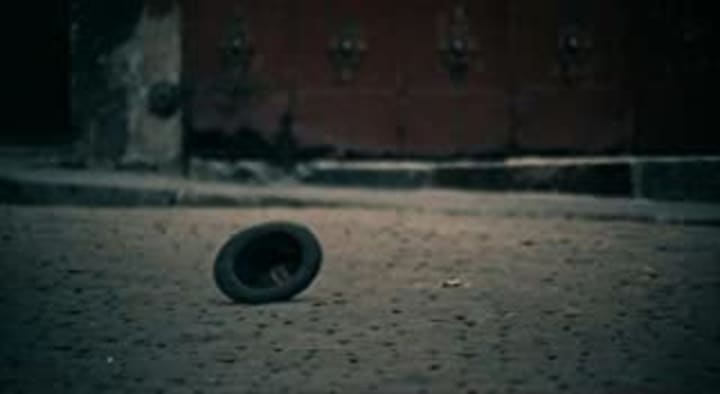
Another critic, Simon Kitson, criticizes the historical lax of the film, citing a scene that used a gun that would not have been used until later in the year depicted. Aside from what the critic himself calls “nit-picking gripes,” Kitson praises Army of Shadows as “an important film, and an excellent teaching device.”[16]
Though Melville died before he could receive all this praise, he did know the opinion of one of the only critics that really mattered – Melville relays the first time Kessel watched the film:
Kessel’s emotion after the first screening of Army of Shadows is one of my most treasured memories. When he read the words telling of the deaths of the four characters, he couldn’t stop himself from sobbing. He wasn’t expecting those four lines which he hadn’t written and which I hadn’t put into the script.[17]

There is some conciliation in that. Though Melville was underappreciated in his time, those that really mattered, the author that influenced him and the members of the Resistance who later saw the film, were floored by Melville’s adaptation of their struggle. Melville specifically cites the hotel room in London as a talking point of Resistance members – “Every time I meet a member of the Resistance, he asks how I knew what his room was like.”[18] Melville was proud to have pleased those former Resistance members, those who held the story so personally. As one of them, Melville had the advantage but he also had a disadvantage. He easily could have made his characters too specific to his situation and less specific to the situations of others. The way he framed it, instead, allowed other Resistance members to relate and feel their “unhappy memories” in the company of others that lived the same ones.
The film has a score of 8.1 on IMDb[19], a Metascore of 99[20] (based on 24 critic reviews provided by Metacritic.com, with a 100 rating by Roger Ebert among many others), and 4.6 out of 5 stars as customer reviews on Amazon.com[21]. Despite its initial flop in France, the film has influenced American audiences, cinematography, historical films, directors, and critics since its debut in 2006. So loved is it that many consider the release in the United States “long overdue” despite the failure in France. No one can definitively say that the film would have succeeded if it had simultaneous release in France and the United States, but the question is an intriguing one to ponder.
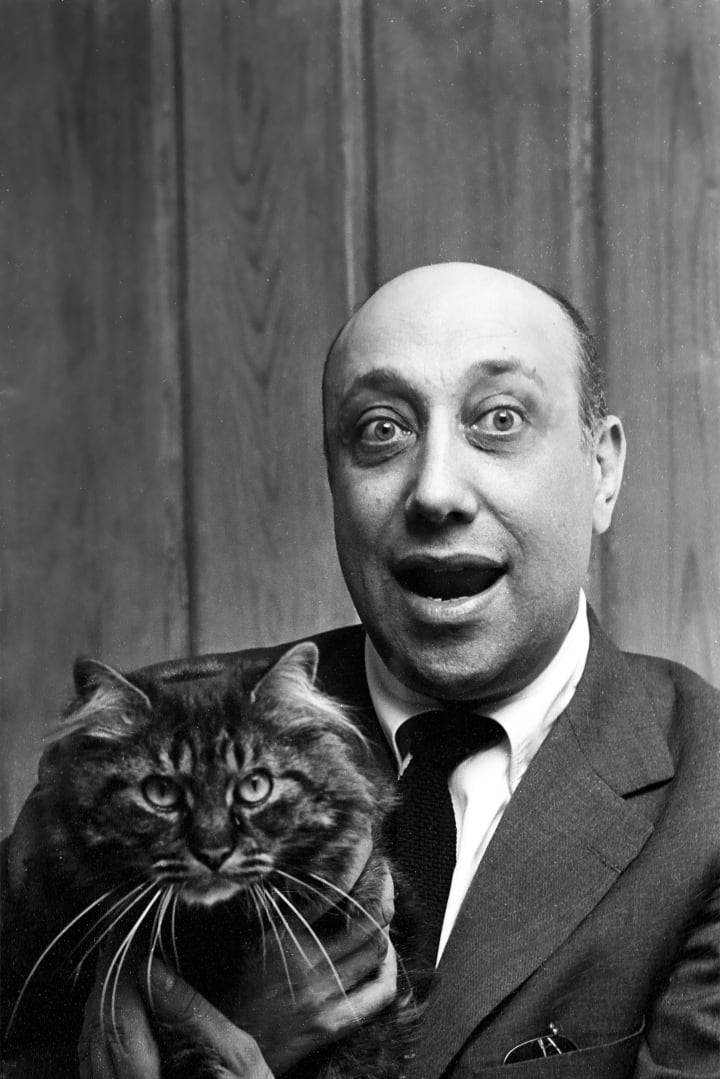
Though he died without knowing his true effect on American critics and directors, Melville has inspired and influenced famous directors in American cinema such as John Woo, Quentin Tarantino, Michael Mann, Volker Schlöndorff, Johnnie To, and Martin Scorsese. Perhaps Melville’s largest compliment is written as the bottom line of his IMDb page:
If a man’s legacy is best measured not only by its quality but by the respect of his colleagues, Jean-Pierre Melville’s contribution to cinema surely ranks with the greatest.[22]
Footnotes
[1] “Jean-Pierre Melville – Biography – IMDb,” IMDb, http://www.imdb.com/name/nm0578483/bio?ref_=nm_ov_bio_sm.
[2,3,4] “:: MELVILLE on ‘ARMY OF SHADOWS’ ::,” Rialto Pictures, http://www.rialtopictures.com/images_6/melville_army.html.
[5] “Melville’s French Resistance – From the Current – The Criterion Collection,” The Criterion Collection, http://www.criterion.com/current/posts/1711-melville-s-french-resistance.
[6] The interview is a special feature on the Criterion Collection version of the film and will be cited in the bibliography as simply “Army of Shadows special features”.
[7] From the Special Features section of The Criterion Collection’s edition of the DVD.
[8,9,10] “:: MELVILLE on ‘ARMY OF SHADOWS’ ::,” Rialto Pictures, http://www.rialtopictures.com/images_6/melville_army.html.
[11] Amy Taubin, “Army of Shadows: Out of the Shadows – From the Current – The Criterion Collection,” The Criterion Collection, http://www.criterion.com/current/posts/483-army-of-shadows-out-of-the-shadows.
[12,13] Roger Ebert, “Army of Shadows Movie Review & Film Summary (1969) | Roger Ebert,” RogerEbert.com, http://www.rogerebert.com/reviews/great-movie-army-of-shadows-1969.
[14] Jonathan Rosenbaum, “:: CRITICS on ‘ARMY OF SHADOWS’ ::,” Rialto Pictures, http://rialtopictures.com/images_6/army_chicago.html.
[15] Dave Kehr, When Movies Mattered (Chicago: University of Chicago Press, 2011, 240.
[16] Simon Kitson, “Army of Shadows and Lacombe, Lucien | Fiction and Film for French Historians,” Fiction and Film for French Historians, http://h-france.net/fffh/classics/army-of-shadows/.
[17,18] “:: MELVILLE on ‘ARMY OF SHADOWS’ ::,” Rialto Pictures, http://www.rialtopictures.com/images_6/melville_army.html.
[19] “Army of Shadows (1969 – IMDb),” IMDb, http://www.imdb.com/title/tt0064040/?ref_=nv_sr_1.
[20] “Army of Shadows (1969) – Critic Reviews – IMDb,” IMDb, http://www.imdb.com/title/tt0064040/criticreviews?ref_=tt_ov_rt.
[21] “Amazon.com: Army of Shadows (The Criterion Collection),” Amazon, http://www.amazon.com/Army-Shadows-The-Criterion-Collection/dp/B000NOK0HG.
[22] “Jean-Pierre Melville – Biography – IMDb,” IMDb, http://www.imdb.com/name/nm0578483/bio?ref_=nm_ov_bio_sm.
[23] Though some website titles started with symbols or spaces, I chose to ignore those when alphabetizing to avoid overcomplicating and maintain a sort of organization.
Bibliography[23]
“Amazon.com: Army of Shadows (The Criterion Collection),” Amazon, http://www.amazon.com/Army-Shadows-The-Criterion-Collection/dp/B000NOK0HG.
Army of Shadows. Dir. Jean-Pierre Melville. Perf. Lino Ventura, Simone Signoret, Paul Meurisse, Jean-Pierre Cassel. 1969. Rialto Pictures, 2006, DVD.
Army of Shadows, special features. Dir. Jean-Pierre Melville. Perf. Lino Ventura, Simone Signoret, Paul Meurisse, Jean-Pierre Cassel. 1969. Rialto Pictures, 2006, DVD.
“Army of Shadows (1969) – IMDb.” IMDb. http://www.imdb.com/title/tt0064040/?ref_=nv_sr_1.
“Army of Shadows (1969) – Critic Reviews – IMDb.” IMDb. http://www.imdb.com/title/tt0064040/criticreviews?ref_=tt_ov_rt.
Ebert, Roger. “Army of Shadows Movie Review & Film Summary (1969) | Roger Ebert.” RogerEbert.com. http://www.rogerebert.com/reviews/great-movie-army-of-shadows-1969.
“Jean-Pierre Melville – Biography – IMDb,” IMDb. http://www.imdb.com/name/nm0578483/bio?ref=nm_ov_bio_sm.
Kehr, Dave. When Movies Mattered. Chicago: University of Chicago Press, 2011.
Kitson, Simon. “Army of Shadows and Lacombe, Lucien | Fiction and Film for French Historians.” Fiction and Film for French Historians. http://h-france.net/fffh/classics/army-of-shadows/.
“:: MELVILLE on ‘ARMY OF SHADOWS’ ::.” Rialto Pictures. http://www.rialtopictures.com/images_6/melville_army.html.
“Melville’s French Resistance – From the Current – The Criterion Collection.” The Criterion Collection. http://www.criterion.com/current/posts/1711-melville-s-french-resistance.
Rosenbaum, Jonathan. “:: CRITICS on ‘ARMY OF SHADOWS’ ::.” Rialto Pictures. http://rialtopictures.com/images_6/army_chicago.html.
Taubin, Amy. “Army of Shadows: Out of the Shadows – From the Current – The Criterion Collection.” The Criterion Collection. http://www.criterion.com/current/posts/483-army-of-shadows-out-of-the-shadows.
About the Creator
Tommie N. Cotton
I enjoy experiencing media and writing about it in a way that engages discussion and introspection from myself and others. For now, I'll be posting old essays I wrote for academic assignments until I find my feet on the platform.
Enjoyed the story? Support the Creator.
Subscribe for free to receive all their stories in your feed. You could also pledge your support or give them a one-off tip, letting them know you appreciate their work.






Comments
There are no comments for this story
Be the first to respond and start the conversation.